


People Friendliness of the Neighborhood
![]()
Which Neighborhood Would You Choose?
A typical neighborhood in the United States...
Here, single family homes are set back from the street, approached by a wide driveway to a large garage door that dominates the front facade. Sidewalks are optional and if present, are difficult to walk on due to the uneven driveway cuts.
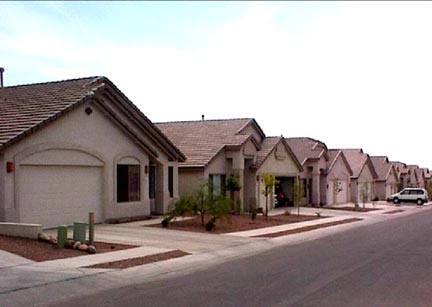
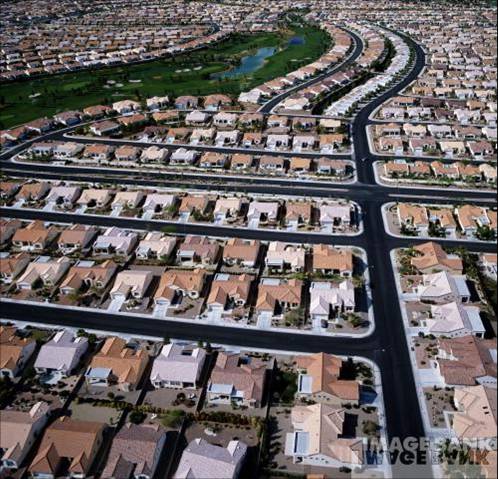
The pattern of streets is carefully designed to channel all vehicles out of the neighborhood to arterial streets through the
use of cul de sacs and absence of cross streets. One cannot walk around the block - there are no blocks.
Many dozens of homes are clustered together so that the distance to stores, schools, parks, employment centers and civic places
is too far to walk so every trip must be a car trip or perhaps a bike trip.
Residents drive through this neighborhood to their homes and into the driveway where they push a button to open the garage door. After parking the car inside the garage, they enter their home, never having to interact with their neighbors at all. Inside, the interior ecology is expansive, comfortable and pleasant providing a refuge from the world outside.
Each morning, many residents of this typical neighborhood drive to work. This often involves a commute of more than 45 minutes through congested streets and expressways. At lunchtime, it is necessary to drive to the favorite lunch spot and back. Then, after work, there is another 45+ minute commute through rush hour traffic to return home. Residents are often so exhausted by now that they find that it is difficult to find the energy to go back out to that civic meeting or school activity. An evening of TV is a more appealing option.
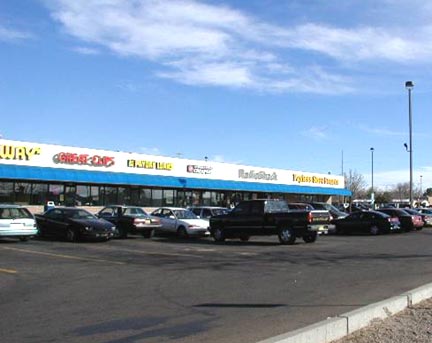
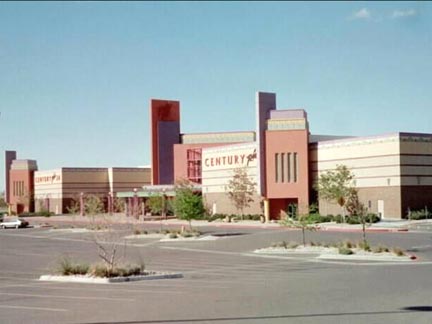
Stores and movie theaters provide plenty of parking for customers because everyone must drive to get there.
Taking transit is not an option either because the closest access is too far as well.
Then there is the challenge of providing transport to the children.
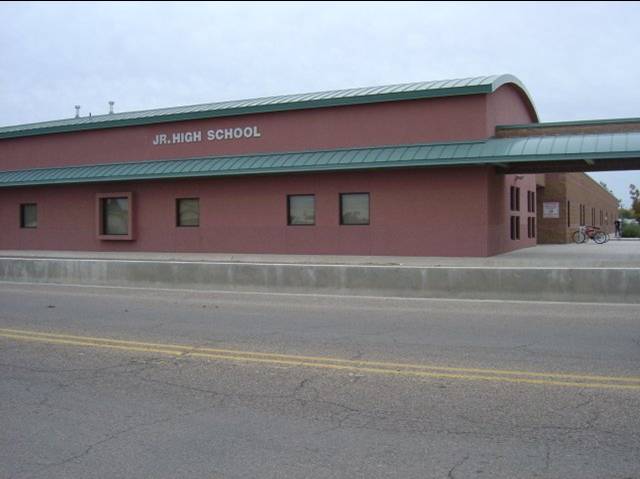
Most often schools are too far to walk so driving to school is necessary unless a school bus is available.
More trips are often needed for after school sports, dancing and music lessons, food shopping......
Driving in the car is necessary for everything the family does.
![]()
Alternatively, would you choose another neighborhood, often found in older parts of cities and towns in the US, and with greater frequency in newer developments in many cities?
Here, the homes are close to the sidewalk, perhaps with a front porch and a maybe a small front garden. Driveways are not present; cars may either be parked on the street or in the garage entered through an alley behind the home. Sidewalks are always present and no driveway cuts obstruct walkers.
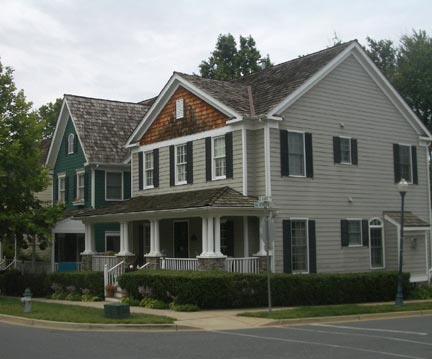
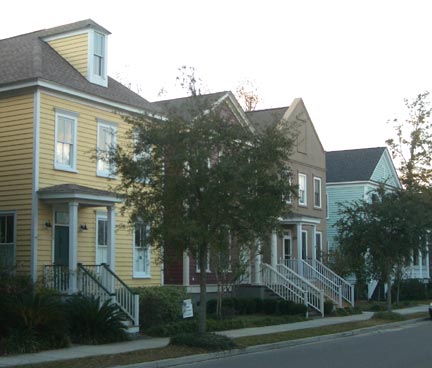
The pattern of streets is a grid of blocks that are small enough to provide many paths through the area whether one chooses to drive, walk or ride a bike. In some areas, homes are row houses or courtyard apartments, and others are low-rise condos or apartment buildings or "mansion homes" that look like large homes but actually are 4 to 8 homes in a single building (right below).
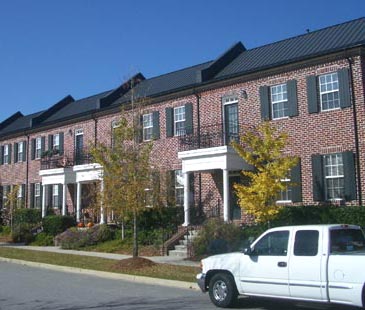

The residences are clustered around village centers where stores provide most
daily needs and a plaza provides a meeting place for the neighborhood.
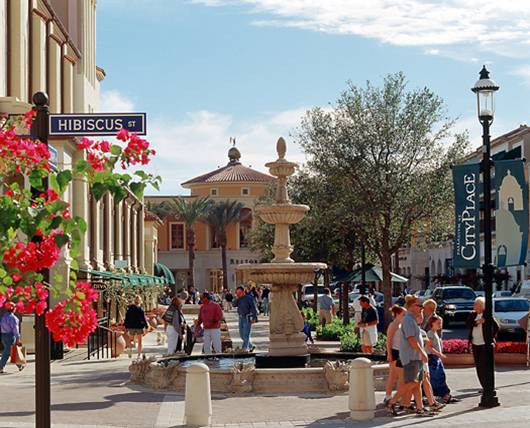
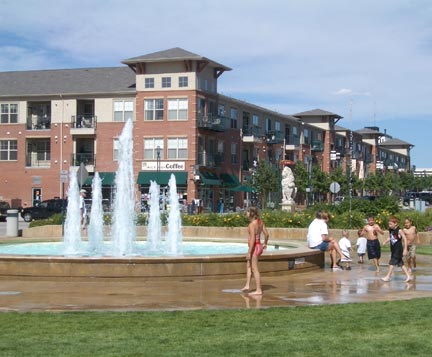
Schools and parks are within walking and biking distance. To reach destinations that are farther away, transit is
available within just a ľ mile walk.
Each morning some residents of this neighborhood drive to work, but some take transit, walk and even ride bikes. Some residents enjoy a live/work place and donít need to venture outside to get to work! Even the residents whose work is farther away find their commute less congested because their neighbors are not all in their cars and there are several paths to leave the neighborhood.
So think about it and consider these concepts when you choose your next home.